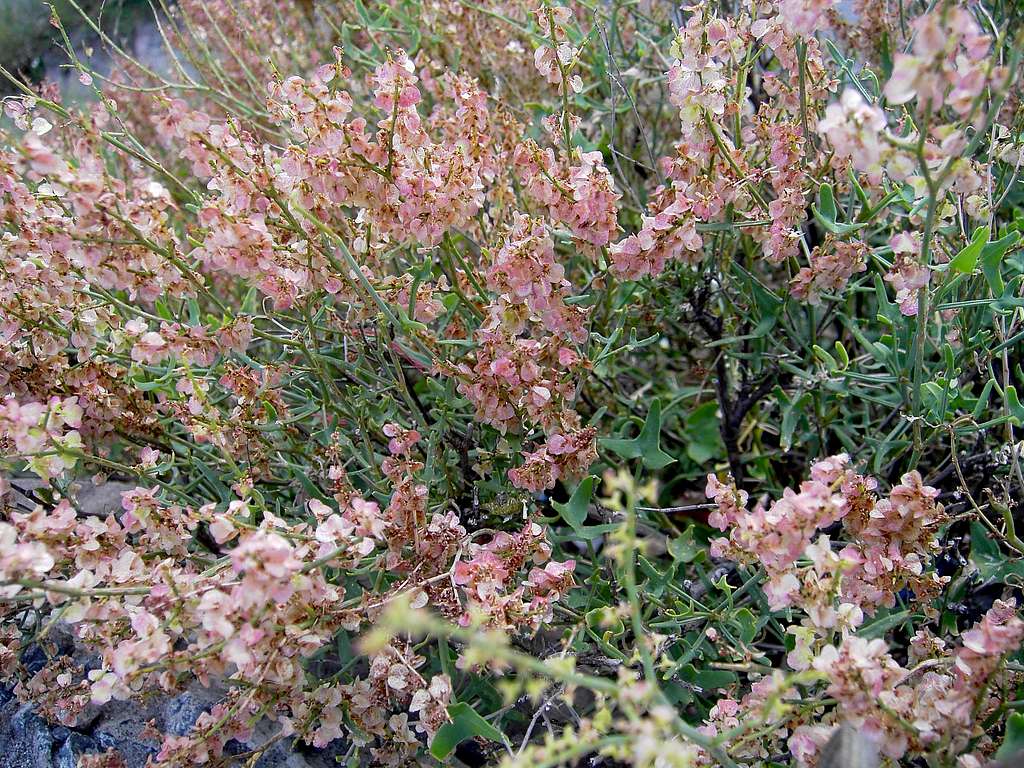Chris Chadwell - May 1, 2018 11:51 pm - Hasn't voted
Rumex hastatus?Unfortunately, most of the photo is out-of-focus. With plants like this, a camera is often 'confused' as to what to focus on; in this case it has focussed on the leaves, rather than the flowers. Better to photograph from further back and then do close-up of flowers. Despite this obstacle, I think this probably is Rumex hastatus. Stewart, in his ‘An Annotated Catalogue of the Vascular Plants of Pakistan & Kashmir’ considered this as one of the commonest small shrubs at the base of N.Pakistan mountains, on banks, walls, among rocks etc. He only recorded this from 700-2100m, which certainly does not make this a 'high-altitude' plant.
. PLEASE, each time you post, provide an approximate elevation (exact not necessary), approximate location in terms of nearest village, pass, lake or whatever and DO ALSO photograph the leaves (foliage) as well as flowers - otherwise it can be IMPOSSIBLE to arrive at a definite identification. Ideally, take SEVERAL photos per specimen showing flowers (front and underneath), foliage (top surface and underneath), habitat shot and habit of plant - I realise this requires greater effort but once a methodical approach is adopted, it is straightforward to do and does not take that long (though hard-going at extreme elevations.....but having taken the time, effort and expense to get to these lovely places, worth getting the most out of it and helping the study of Pakistan flora); nowadays with digital cameras and small memory cards (which can accept large numbers of images) and small batteries, this can readily be done. When I began exploring the Himalaya in the 1980s, one used slide-film, which was expensive, so only 1 or 2 photos could be taken per plant and a tripod plus macro-lens was needed for close-up images of flowers. That has all changed. If anyone reading this is heading to the Himalaya in the coming years and would welcome further advice about securing a good set of images of the flora seen (sufficient to enable me to provide identifications), do get in touch. NO charge! Founder & Editor Himalayan Plant Association shpa.org.uk






Comments
Post a Comment